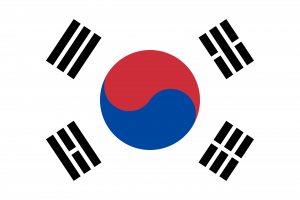Language/Korean/Grammar/Plurals
Learning how to form plurals in Korean is an important part of mastering the language. Plurals are used to indicate more than one of something, and they can be formed in a variety of ways depending on the context. In this lesson, we'll look at the different ways to form plurals in Korean and how to use them correctly.
Nouns
When it comes to forming plurals with nouns, there are two main ways to do it in Korean. The first is to add the suffix -들 (-deul) to the end of the noun. This is the most common way to form plurals in Korean, and it's used for both animate and inanimate objects. For example:
- 사람 (saram) - people
- 사람들 (saramdeul) - people
- 나무 (namu) - tree
- 나무들 (namudeul) - trees
The second way to form plurals with nouns is to add the suffix -명 (-myeong) to the end of the noun. This is used mainly for animate objects, such as people or animals. For example:
- 사람 (saram) - person
- 사람명 (sarammyeong) - people
- 개 (gae) - dog
- 개명 (gaemyeong) - dogs
Verbs
When it comes to forming plurals with verbs, there are two main ways to do it in Korean. The first is to add the suffix -들 (-deul) to the end of the verb. This is the most common way to form plurals with verbs, and it's used for both animate and inanimate objects. For example:
- 먹다 (meokda) - to eat
- 먹다들 (meokdadeul) - to eat
- 자다 (jada) - to sleep
- 자다들 (jadadeul) - to sleep
The second way to form plurals with verbs is to add the suffix -고 (-go) to the end of the verb. This is used mainly for animate objects, such as people or animals. For example:
- 먹다 (meokda) - to eat
- 먹고 (meokgo) - to eat
- 자다 (jada) - to sleep
- 자고 (jago) - to sleep
Adjectives
When it comes to forming plurals with adjectives, there are two main ways to do it in Korean. The first is to add the suffix -들 (-deul) to the end of the adjective. This is the most common way to form plurals with adjectives, and it's used for both animate and inanimate objects. For example:
- 빨갛다 (ppalgatda) - red
- 빨갛다들 (ppalgatdadeul) - red
- 크다 (keuda) - big
- 크다들 (keudadeul) - big
The second way to form plurals with adjectives is to add the suffix -더 (-deo) to the end of the adjective. This is used mainly for animate objects, such as people or animals. For example:
- 빨갛다 (ppalgatda) - red
- 빨갛더 (ppalgatdeo) - red
- 크다 (keuda) - big
- 크더 (keudeo) - big
Now that you know how to form plurals in Korean, why not practice your new skills with the community at Polyglot Club? Polyglot Club is a great place to meet other language learners and practice your Korean.
If you have any questions, please ask them in the comments section below.
Feel free to edit this wiki page if you think it can be improved. 😎
Videos
Making Words Plural in Korean - YouTube

